Some shots from an autumn ramble along Byrne Creek in SE Burnaby, BC.

This melon is trailing its way from a neighbouring field and into the spawning habitat
Thanks to the City of Burnaby Parks Dept and the Environmental Youth Alliance for an interesting mason bee workshop today!
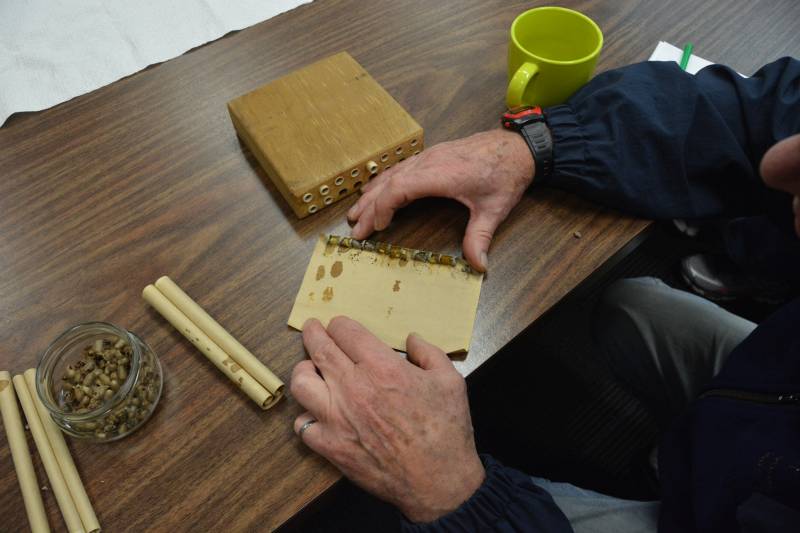
Unrolling paper tubes from mason bee “condo”
Mason bees are very important pollinators for fruit trees as well as vegetables, flowers, etc. Due to concerns about the decline of pollinators, the City of Burnaby has a program in which it installs “bee condos” in municipal parks, and asks volunteers to monitor and clean them, harvest cocoons, keep them dry and cool over the winter, and place them back out in the spring to hatch. Mason bees are ideal for urban areas because they are very placid and non-aggressive.
Count bugs? Yep, doing aquatic invertebrate surveys is a good indicator of water quality, so we do them twice a year at nine locations on the creek.
Volunteers took bug samples (aquatic invertebrates) at three locations on Byrne Creek in SE Burnaby today. While we haven’t run the numbers yet, judging by how few bugs we found, and the very limited variety, the water quality is likely in the lowest “Poor” category.
We use the established Module 4 methodology from the Streamkeepers Handbook.
The water in Byrne Creek is usually in the “Poor” to “Marginal” categories, since our “headwaters” are all residential, automotive, retail, etc. All the crap that accumulates on roads and parking lots is flushed into the creek.
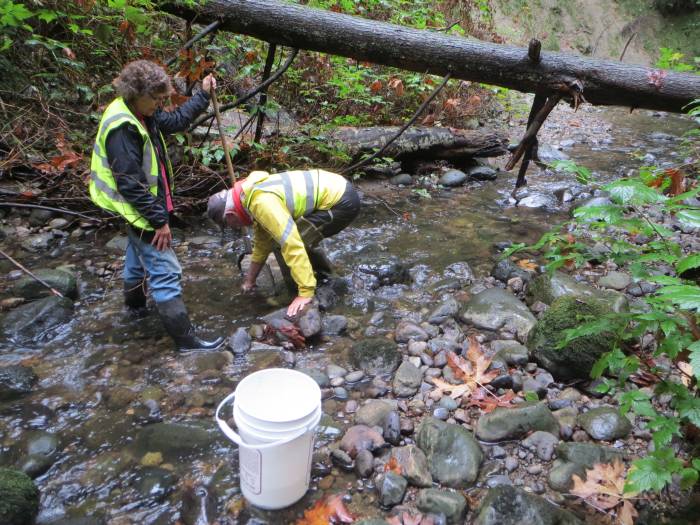
Taking a sample with a D-net
My wife caught Choco the cat curled up on my tummy when I stretched out for a nap before supper. I know it’s getting colder when Choco plants herself on my lap when I’m seated, or on my chest when I’m napping.
When Yumi sent me the photos and I filed them in my “Choco” folder, I found a similar scene from almost exactly ten years ago.
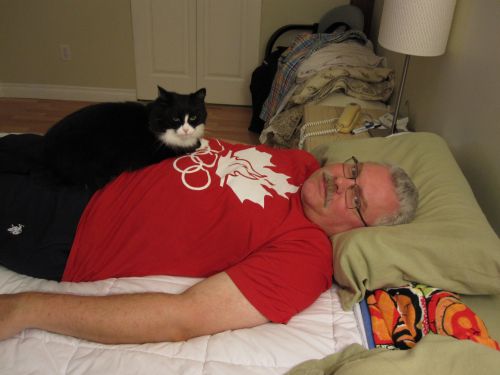
Here we are before dinner tonight
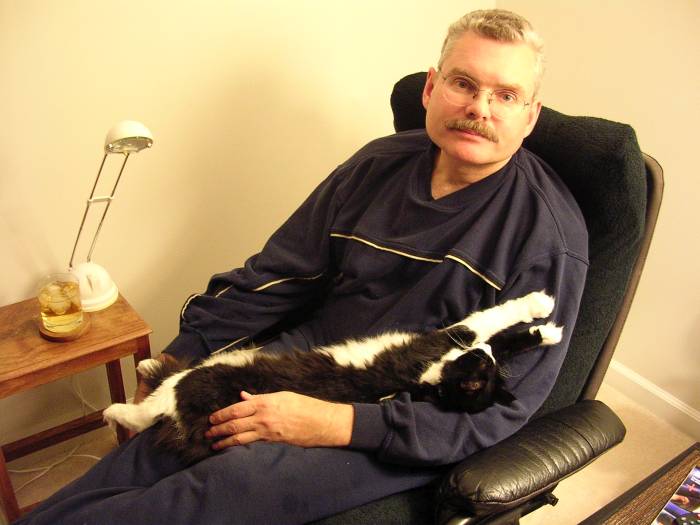
And here we are in November 2004. “Whiskers and Whisky” : -)
Choco always looks good, but ten-years-later me could stand to shed a few pounds.
I’ve always loved cuddling with felines. I like dogs, too, just haven’t had as much opportunity to share life with them over the years.
Despite the drizzle that gradually increased to steady rain, I took a two-hour ramble down and back up Byrne Creek in SE Burnaby, BC, today, hoping to see salmon coming back to spawn. When the rains raise the water level, the fish start heading upstream in mid-October, so they should arrive any day now.
I didn’t see any salmon, but it was a lovely day with the rain giving foliage a lush sheen, and the overcast sky imbuing the forest with a soft light.
When I heard the lush, lovely sound of steady rain when I stirred in my slumber last night, I couldn’t help smiling. For the rains bring the salmon, and salmon are life.
We don’t get many salmon returning to spawn on our battered urban creek in SE Burnaby, but those that do stir excitement and passion in people attuned to the natural environment. As a volunteer streamkeeper for 15 years, I do my best to connect as many kids and adults as possible to nature in the city.
So while the weather forecast may look grim to some, I find it exhilarating.
That’s because salmon that hatched in Byrne Creek have returned from their years in the Pacific Ocean. Those that have made it through the fisheries along the coast, and in the Salish Sea, and in the Fraser River, are pooling at the mouth of the creek, waiting for higher flows to assist their passage up the little waterway.
As long as there is rain, we spot the first spawners arriving in the creek around October 17, give or take a day or two.
So this forecast looks great!
The return of sockeye salmon to the Adams River in the Shuswap in British Columbia peaks every four years. This was my third or fourth visit for a peak run, combined with a 3-day SEHAB (Salmon Enhancement and Habitat Advisory Board) meeting.
Here are a few photos taken while volunteering on the river as an interpreter for the thousands of tourists who flock to this amazing event. The run was not yet at its peak, and I hope I can find the time to make it up there one more time this year.
Check out Salute to the Sockeye for more information.
More photos in Jasper area, Icefields Parkway between Jasper and Banff, and Lake Louise.
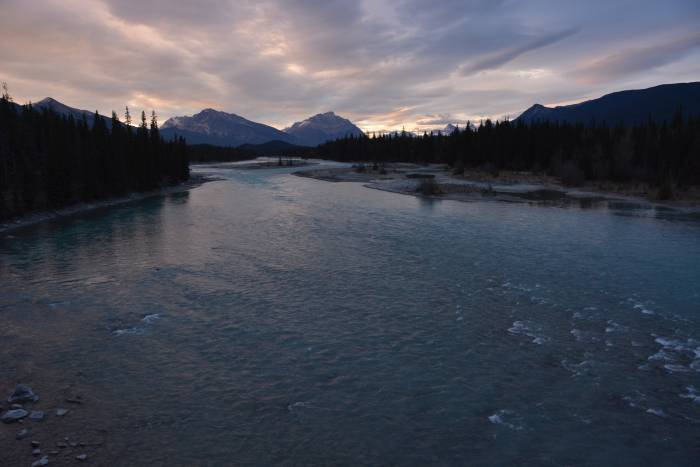
Jasper sunrise
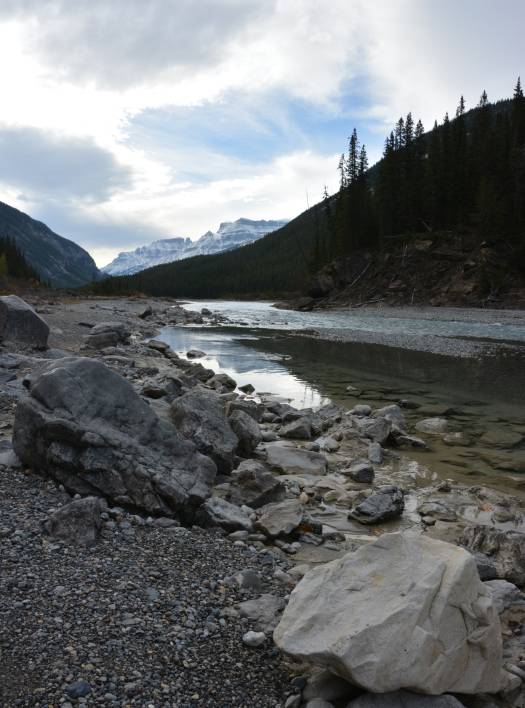
Along the Icefields Parkway

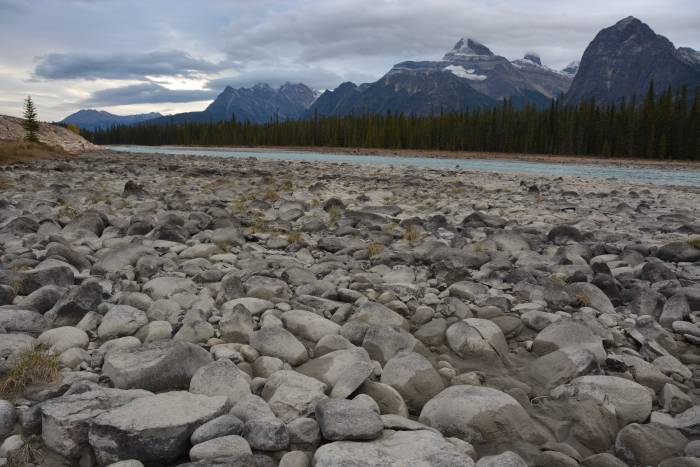


Lake Louise
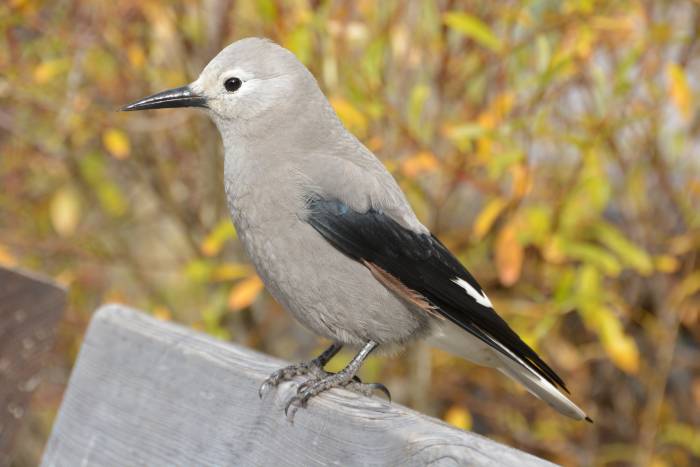
Clark’s Nutcracker
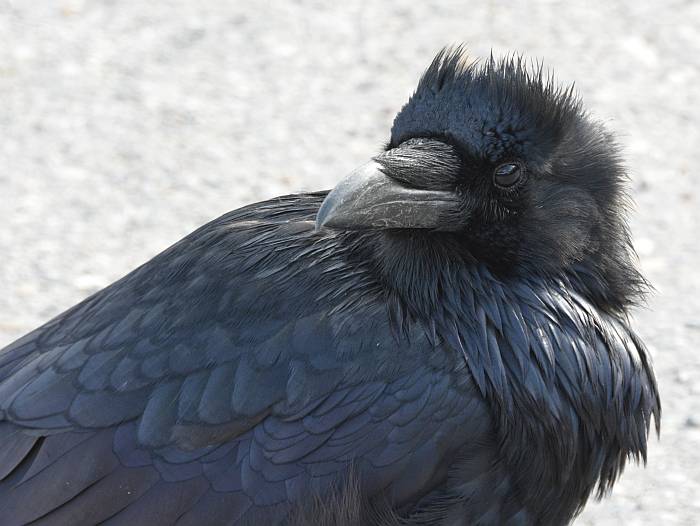
Today I drove from Burnaby to Kamloops, taking the 3 across to Princeton, and then the 5A up to Kamloops. This takes several hours longer than just blasting up the 5, but I prefer the slower, more intimate roads for photography.
The following shots were all taken along the 5A.
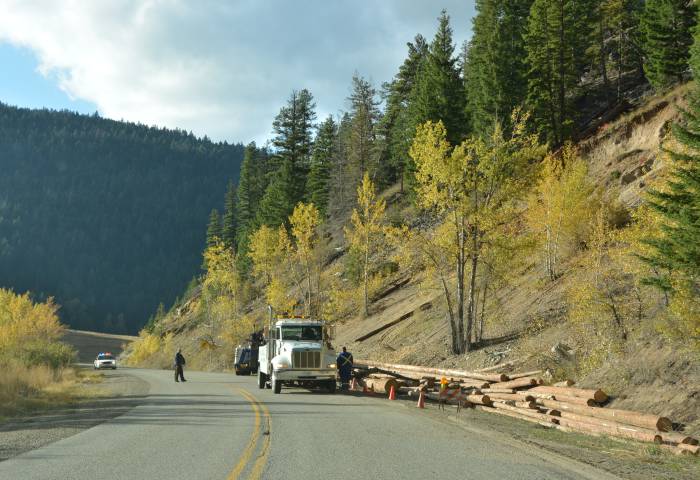 This was the second flipped semi I saw today. Yikes! Slow down!
This was the second flipped semi I saw today. Yikes! Slow down!

It was windy and there were whitecaps on Nicola Lake